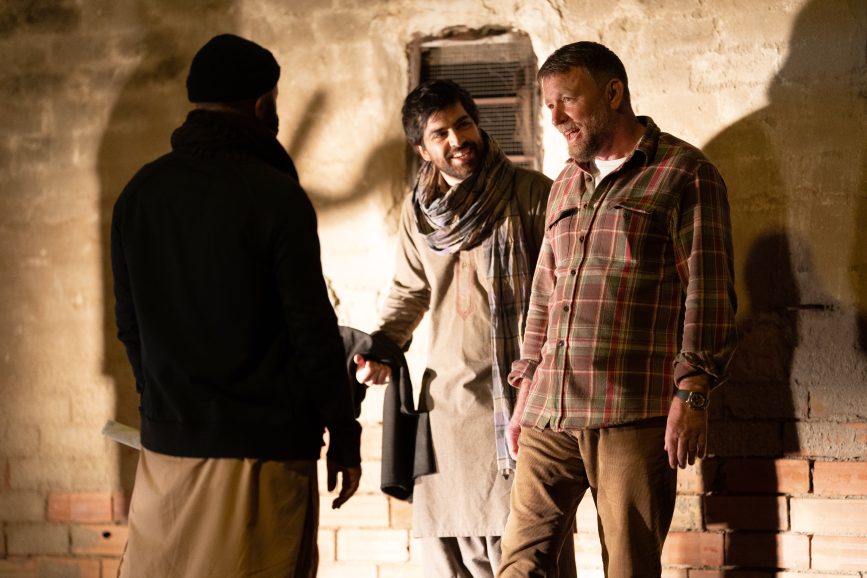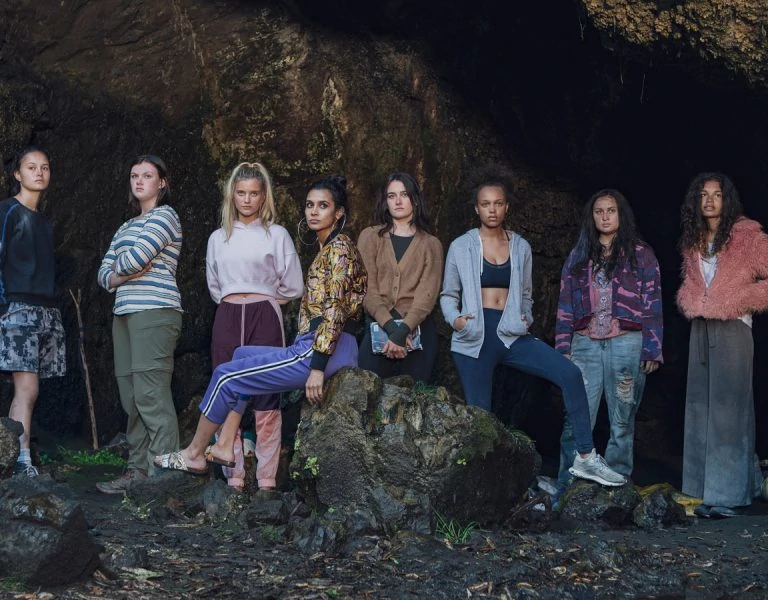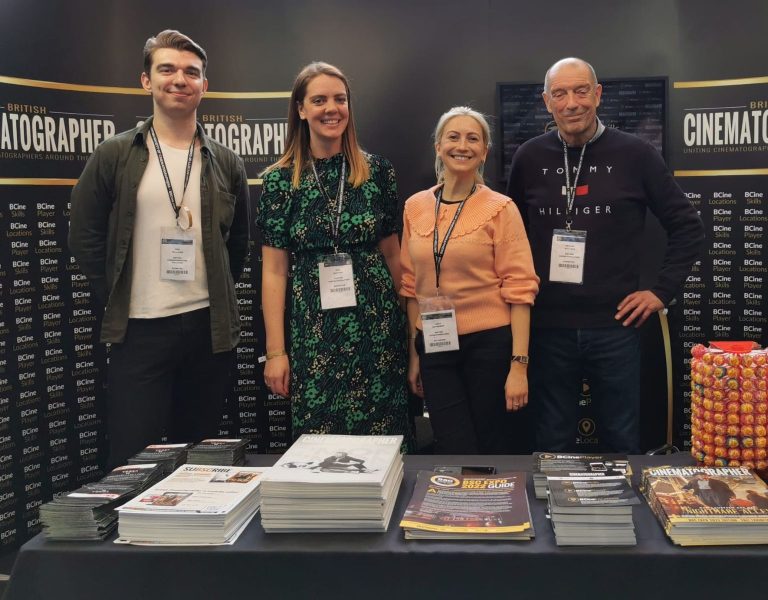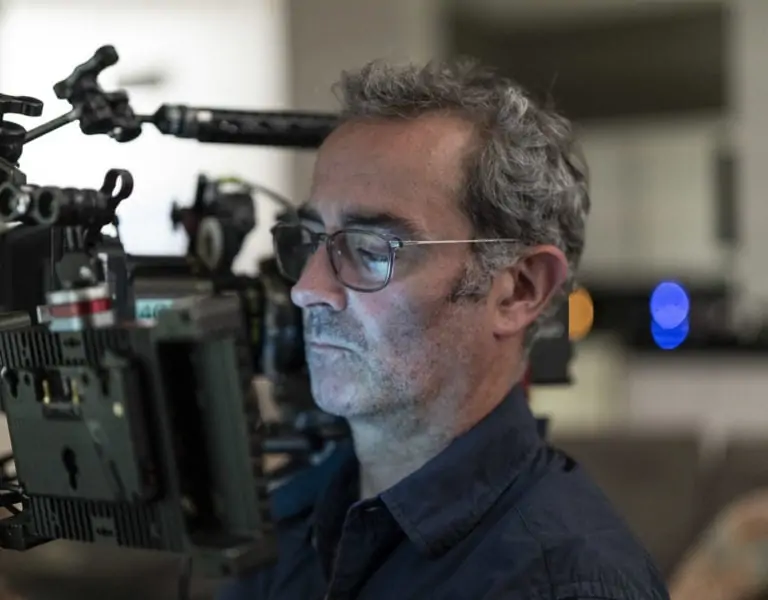CAMARADERIE IN COMBAT
Capturing the bond and bravery of two men from different cultures who selflessly help one another led Guy Ritchie and cinematographer Ed Wild BSC to choose a more stripped back shooting package than the director’s previous productions. The result is an authentic human story of survival and sacrifice that shines on screen.
Despite the narrative of his back catalogue of cinematic successes being far removed from the war films that have captivated him, it was a genre director Guy Ritchie (Lock, Stock and Two Smoking Barrels, Snatch, RocknRolla) longed to explore.
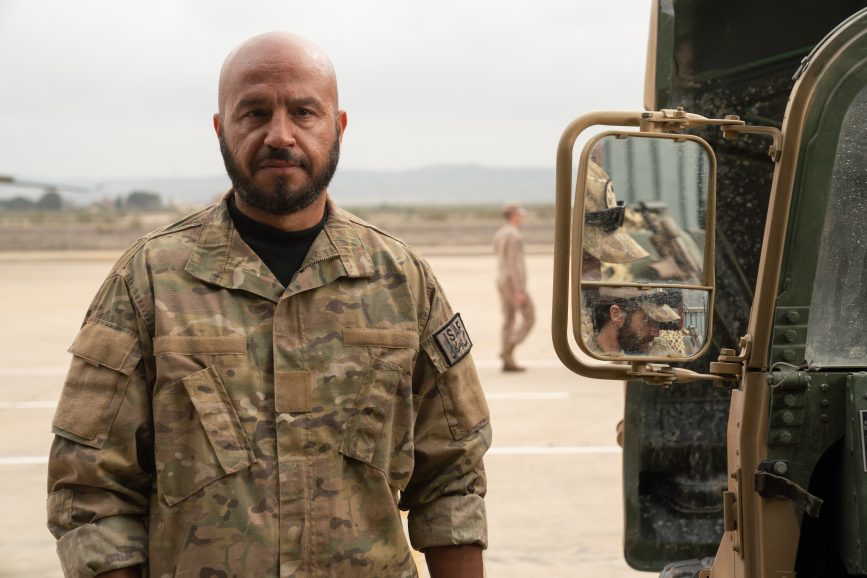
“It’s probably my favourite genre of movies, but we couldn’t find a story that appealed for a long time,” he says. Hearing anecdotes about Afghanistan “that all sounded, in equal measure, horrifying and inspiring,” was the genesis of the idea for the director’s latest release, The Covenant, which is set in war-torn Afghanistan in 2018 and follows John Kinley (Jake Gyllenhaal), the US Army Sergeant who is saved by Afghan interpreter Ahmed (Dar Salim).
The film is inspired by many stories of Afghan interpreters who worked with the US military and were promised visas but were then abandoned in the country following the US withdrawal from Afghanistan in 2021. It “was an amalgam of the different stories, documentaries, anecdotes that I was aware of,” adds Ritchie. “And, obviously, the story of one man’s selflessness for another was what I found inspiring about the premise.”

Cinematographer Ed Wild BSC (Black Mirror, London Has Fallen, The Wilds,) was first drawn to the story because “it wasn’t your standard war film – it’s a relationship film set against the background of war, which feels more realistic.” The honesty with which the story was approached excited Wild, but he wondered if the rawness the film needed aligned with the large stylish set pieces for which a Guy Ritchie production is renowned.
“But Guy wanted to approach the movie in a more stripped back way – using two cameras, handheld, Steadicam, a couple of sliders and no dollies or cranes,” says Wild, who was also delighted to discover he would have access to a drone team which opened up the options further.
Wild believes Gyllenhaal and Salim were the perfect combination of protagonists for a film he likens to “a ’70s two-hander road movie like when László Kovács shot Easy Rider. Although we were nowhere near that stripped back, the film still had that sense of immediacy.”
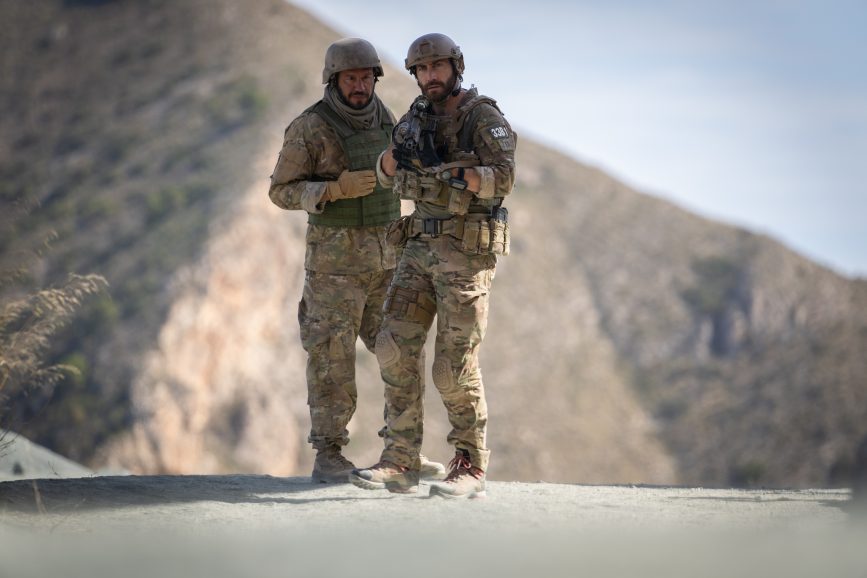
To prepare for his interview with Ritchie, who he not collaborated with before, Wild created a comprehensive mood board, aided by his fascination with the world of war reporting and photography. “Some of the images that have come out of these awful conflicts are incredible and often cost the lives of the photographers,” he says.
Amongst his inspirations was the work of the late award-winning war photojournalist Tim Hetherington including his book Infidel, and the documentary Restrepo which follows a battle-weary platoon trying to hold their position in one of Afghanistan’s most dangerous valleys.
“Hetherington captured how small the combatants were within the vast landscape, conveying the futility of war,” says Wild. “Restrepo was about the grind and reality of war rather than the glamour. That’s what was interesting about The Covenant’s well-rounded and beautiful script which shows how war throws people together and also creates partitions between loved ones.”
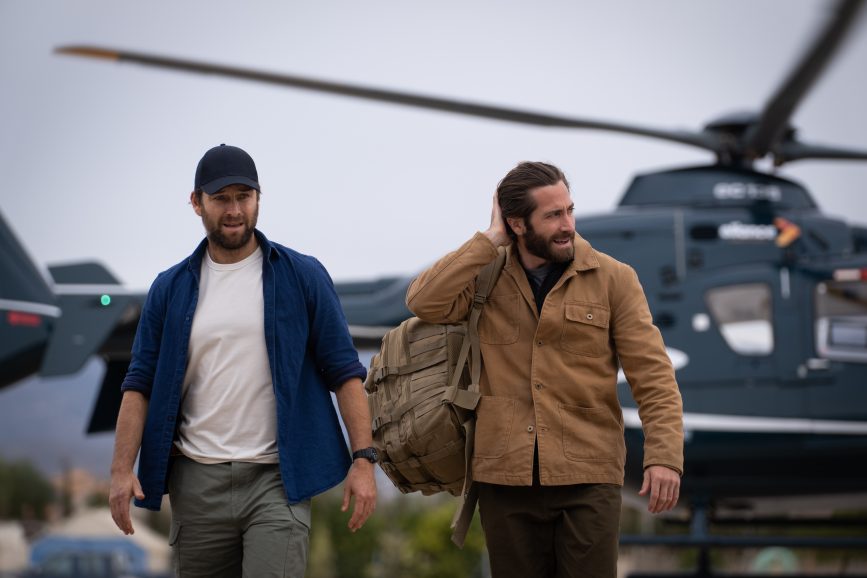
Production designer Martyn John – a frequent collaborator of Ritchie’s – was already on board when Wild joined the project, and they had many references in common such as the work of American photographer Steve McCurry. The team were adamant the production should not be a wash of brown or green, as is common in many war films. “There is colour everywhere in photographs and documentaries about Afghanistan,” says Wild, “and we wanted the film to have an honest colour and richness to counteract the immediacy and reality of the way we’d shoot it.”
This was echoed by production designer John and costume designer Loulou Bontemps who ensured all sets and clothing were carefully balanced in colour and texture. The decision to shoot in the hills of Alicante in spring also allowed the beautiful colours of the mountains and vivid reds of the soil to be captured. “When cinematography goes well, you’re just capturing the beauty of what’s put in front of you rather than trying to impose your will on it,” says Wild.
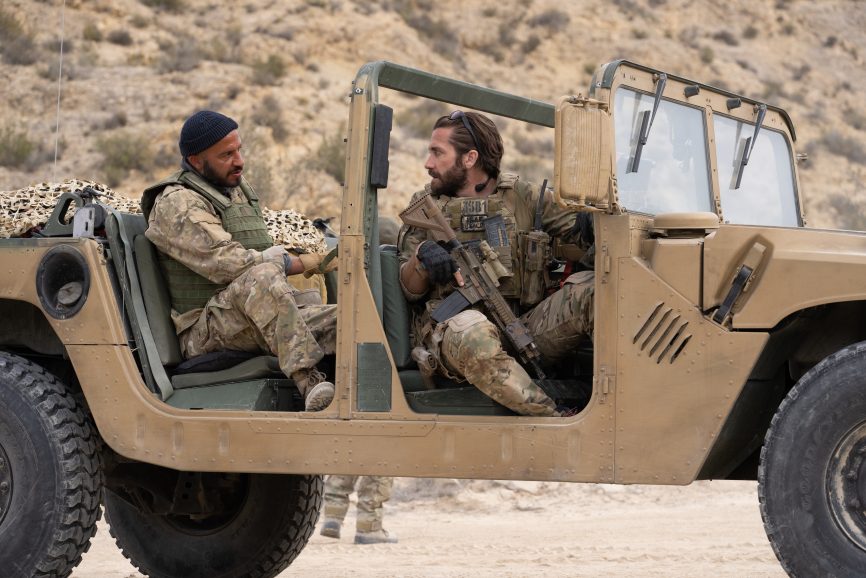
Character focused
Ritchie’s approach is heavily character and story driven and much to Wild’s delight, “there aren’t 16 meetings about how to shoot a dawn shot.” On set, the director creates a feeling of confidence for all departments. “Sometimes he’ll change the dialogue and even the plot on set, depending on what he feels is most interesting – that’s empowering as a head of department,” says Wild.
When blocking a scene to be shot the next day, Ritchie felt the conditions were perfect and it would be best to just shoot the sequence then. By thinking quickly and joining forces, the crew achieved the shot as the director desired. For Wild, it is Ritchie’s “ability to work in an immediately responsive character and story driven way that keeps the production fresh and fast. He doesn’t want to lose the energy of the actors.”
Most of the narrative plays out in Afghanistan with a few scenes in Santa Clarita, California. For obvious reasons, the production couldn’t shoot in Afghanistan, but they discovered Alicante, Spain, could authentically double for the location, aside from the Mediterranean Sea needing to be digitally removed from certain shots. Scenes at Bagram Air Base in Parwan Province were filmed at a military base in Zaragoza, while the climax dam sequence was shot at the Amadorio Reservoir near Villajoyosa.

When navigating shooting in the varying terrain the crew encountered challenges such as having to hand carry equipment in a gulley. This demanded gear was kept to a minimum, something Wild is experienced in, having shot Amazon series The Wilds on difficult to access beaches in New Zealand.
“I’d got into a rhythm of stripping back kit and getting departments like DIT and playback to engage with the mobility we needed,” he says. “While some might think working on a Guy Ritchie film would require 150 trucks of equipment that could grind everything to a standstill, on this film the stripped back package they wanted gave us the ability to move fast and be fluid.”
A key part of that package – supplied by Spanish rental house Vision – was the Sony Venice, chosen for its colour rendition and internal neutral NDs which were “brilliant, particularly when you don’t want to worry about filter changes in dusty environments.”

The camera’s low light capabilities were also advantageous and came into play when Wild captured a huge harbour set at night for his next production with Ritchie – The Ministry of Ungentlemanly Warfare. “I like to give the focus pullers a decent stop and to see what the production and costume designers have created for us to shoot. I don’t like paper, thin focus – I want to see the depth and richness and don’t want the actors boxed in because the focus puller’s trying to work with an unusable aperture.”
Wild shot with Tokina Vistas – lenses he has regularly used for the past few years because they suit his preference for hard light. “They have a softness which works well when combined with the slight sharpness of the Venice,” says the cinematographer who enjoys the “simplicity of lenses that just do what they’re supposed to.”
Due to its weight an ARRI LF and Angénieux zoom lens captured the drone footage. “Guy wants to be fast and able to set up quickly, meaning you have to be pragmatic in equipment choices,” adds Wild,” “which works for me too as you never want to miss a great shot on a tight schedule because the equipment is slowing you down.”

Shooting stories
Whether it was chaotic handheld capturing close-up combat or sweeping wide aerial shots of the landscapes, camera movement was motivated by the characters. Wild loves developing shots and shots that rotate around pan as they immerse the viewer in the character’s world and story.
Drone shots conveyed a sense of scale of the landscape and how small and vulnerable the characters were in comparison. Having previously shot mountain films, Wild appreciates the difficulty of capturing the scale and knows “cranes don’t even touch the sides”. Working with the “exceptional” drone team at Skynamic allowed the footage to be “driven by the characters, transitioning from huge wides into a mid-shot of dialogue taking place in the vehicle, all shot from the drone.”
Wild believes the downfall of drone sequences is often the result of operators “who just shoot shots rather than stories” but he felt confident in Skynamic’s ability to achieve developing shots “transitioning from something small into something big with an exceptional sense of timing.”
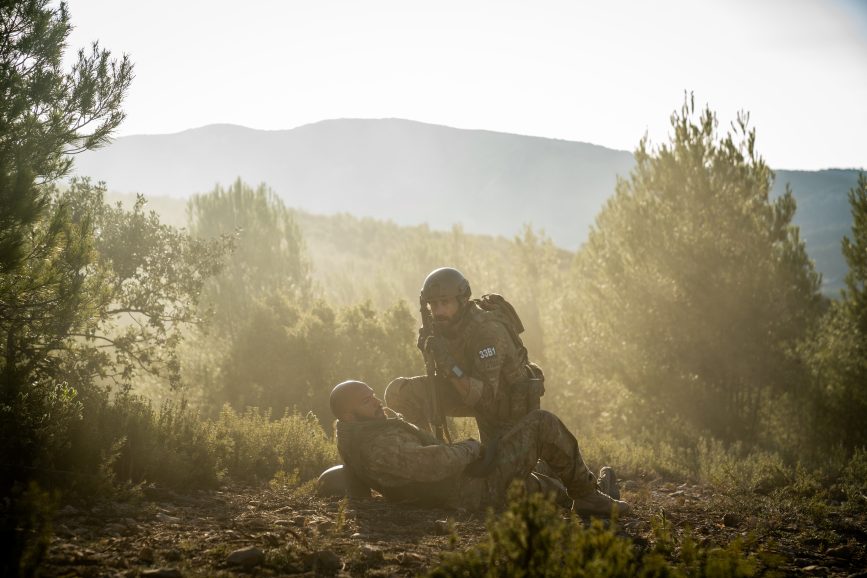
When capturing the action with handheld cameras, Wild wants the operator to be on the move towards a vehicle as it approaches, but there are also times the crew needed to be quiet with the camera. “Sometimes you might do the tiniest, slowest push in and other times you’re driving at full speed, tracking out of the car,” he says. “Producer and 1st AD Max [Keene] also reminded me we could use body mounts on the car when driving, offering those bridging shots something different in terms of that journey and energy that’s not just the rhythms of drone and handheld.”
Wild admits it can be easy to become too immersed when shooting handheld action and make every shot intense, leaving the editor nowhere to go. He thinks it’s important to be brave with scale by capturing super wides of action which he can achieve using the 18mm Tokina. “It just seems to have the right angle of view and relatively low distortion. I want to be in the character’s space and tend to use closer and wider lenses with deeper stops. I also need to understand clearly where they are,” he says. “It’s all about being in the experience with them, again, going back to the war reporters and photographers in the conflict zone and the great Magnum work from the Gulf War – they’re embedded right in it.”
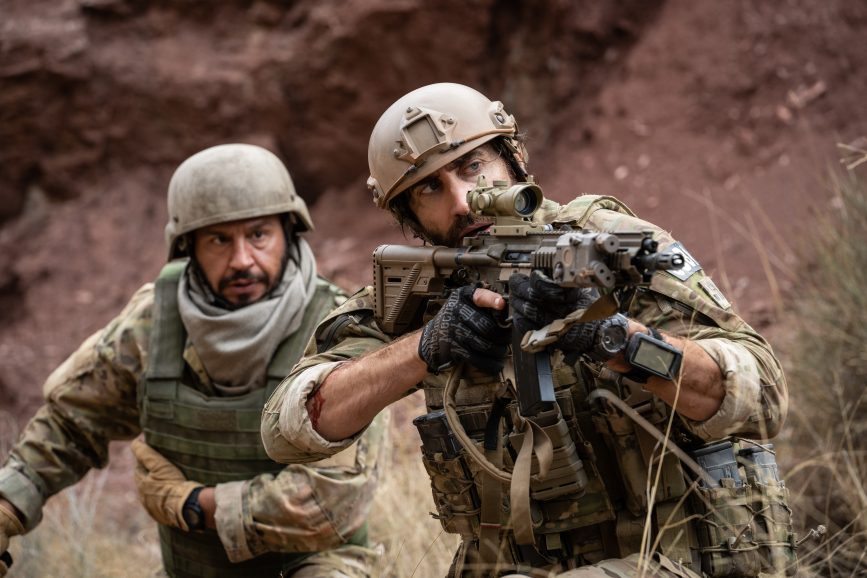
Hallucinatory flashback sequences in which John recalls being dragged over the mountains by Ahmed whilst heavily sedated were captured using what Wild refers to as Ritchie’s “Woo Woo Cam” – a handheld Venice in Rialto mode shooting any angle apart from horizontal combined with an 18mm lens and diopter. “Guy wanted to push and distort those sequences, which the Venice could achieve as it’s super manoeuvrable in Rialto mode – you’re almost using it like a medium format camera,” he says.
When shooting such sequences, the cinematographer and some other crew members’ music video backgrounds and experience of being inventive with available equipment came into play. Wild had previously shot music videos in Spain with B camera operator Tammo van Hoorn when he was a focus puller and A camera operator Peter Wignall ACO’s knowledge of shooting music videos using just a camera and a lens was equally valuable.
“If we’d known that hallucination scene was coming, we may have booked a periscope lens,” admits Wild, “but the handheld Woo Woo Cam combined with a bag of dust was great fun. Jake ate so much dust on this shoot but was completely game from the start. For that set-up, the camera’s six inches from him, and he’s being bumped along in the cart.”

Ritchie also had a penchant for slow motion, but at the times it’s least expected – “in the quieter and more emotional moments, rather than thinking ‘let’s do slo-mo when guns are being fired’, elaborates Wild. “An example of Guy making great use of it is at the end of the film in the dam when we shoot close-up slow motion of debris falling and our protaganists realise they have failed and will most likely die. The slow motion adds to the aching helplessness in that moment.”
Setting out to create a subjective experience and “enhanced naturalism” through the filmmaking, proscenium shooting where the focus is on the beauty of a shot was avoided. “That kills the characters and story and becomes too much about the photography,” he elaborates. “My job was to have that immediacy and honesty in the photography to immerse the audience in the story. That means the image is sometimes compromised technically but is perfect for the story.”
Ritchie likes to achieve as much in camera as possible and while some visual effects were required, no blue screen was relied on. Rather than shooting a scene at the end of the film which sees the characters set off in a helicopter against a blue screen and fixing it in post, the crew captured it in a real helicopter as it took off. Wild elaborates: “Due to 1st AD Max’s experiences working with Ridley Scott on incredible scales of battles, he was like, ‘Well, we’re just going to shoot that for real.”
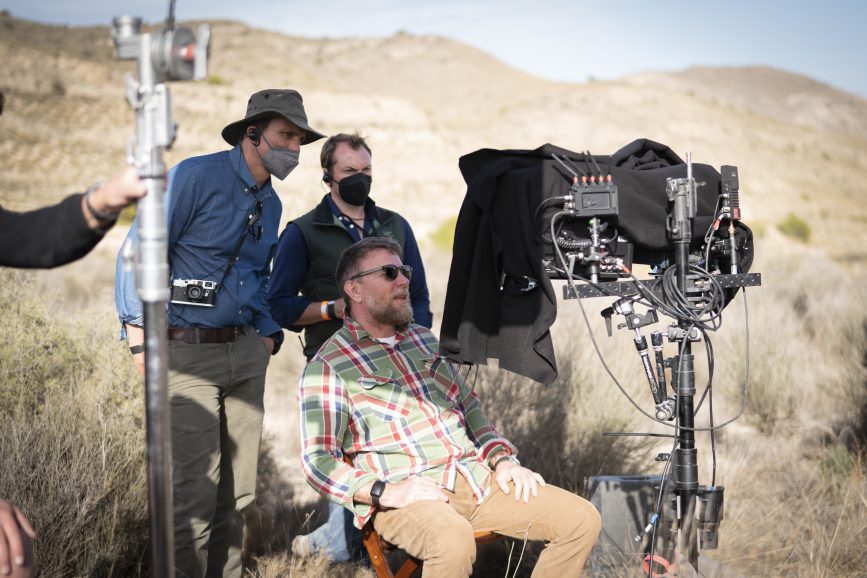
Key collaborations
Gaffer Wayne Shields first met Wild when shooting HBO series Warrior in South Africa. In comparison to that production, when they collaborated on The Covenant, they relied on a more stripped back package including the Lightbridge CRLS reflector which Wild refers to as “an excellent exterior tool that allowed them to be fast” and LED fixtures such as Creamsource Vortexes to create a sense of fill and add light into a flat day. Shields also introduced him to the Rosco DMG which was a “lifesaver at creating a nice soft bounce uplight for the sequences in the Humvees which become black holes in a very bright desert.”
In prep, Wild and Shields determined a desired palette of colours – some created using gels and others dialled in, with everything run on batteries rather than relying on extensive lengths of cable. The “complete chaos” of the lightbulbs in some countries Wild has shot in has made an impression on him and is something he embraced on The Covenant, pushing the acrid colours of the messy mix of lightbulbs by boldly blending their colour and light contrast. This can be seen in a marketplace sequence which combines tungsten bulbs and green fluorescent tubes.
“Wayne opened my eyes to what could be achieved using battery-powered LED to create pops of light carefully placed rather than lighting an entire two city blocks, rolling with what was there and enhancing it with battery lights and the art department’s help with practicals. I’m so happy with the scene and even with all the time and money I wouldn’t do it differently.”
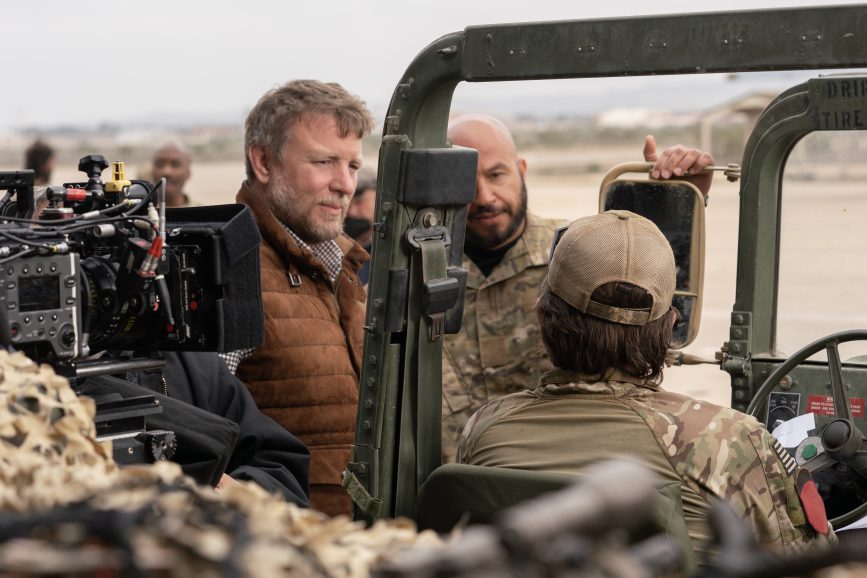
The crew often worked with variable light, especially when shooting big wides in a gulley which was frequently in the shade. Whenever they shot a wide with no sun on it, they created a hotspot on the mountain peak in post and the illusion the sun is low and only reaching the peaks. Wild devised the strategy in pre-production when he realised they had weeks of exterior work with no possible weather cover. This freed the crew up to shoot an entire 10-minute sequence in sun and cloud.
Wild adds: “Whilst I love my collaboration with DIT from Mission, Jacob Robinson, on a job like this you need to work fast and instinctively and using a light meter is my way to make that happen. It also delivers consistency as it is more akin to shooting for printer lights which in turn means the post-production process is faster and smoother.”
He is also a strong believer in determining the post-production pipeline before commencing a shoot which is also crucial in LUT design. Wild wants LUTs to be simple, and normally runs one LUT, maybe two, with one slightly tweaked for night work. When he visited Goldcrest – which has a huge back catalogue of film scans – Wild had a clear idea he wanted to create a look reminiscent of the Fujifilm 250D stock. Colourist Adam Glasman and the cinematographer tweaked that and tested the LUT, so it had the desired colours and subtleties.

Wild invests much time finding teams with whom he wants to collaborate and “inherently I try to find people who are loads better than me and can stop me making mistakes. The image is a testament to everyone’s effort, not just mine. It’s important to involve the crew in what you’re making, particularly with digital and the loss of dailies, and how that sometimes leaves the crew isolated from being part of the filmmaking experience. They’re more than just people who facilitate – it’s their film too and we’re making it together.”
When building a shooting package in Spain and navigating the differences of filming in the country, working with crew members such as A camera focus puller Spencer Murray and A camera loader Dean Moorish was essential. “They knew what we needed and really wrangled to make it work,” says Wild. “Our excellent B camera focus puller Jordi Florensa and his team were also superb. It wasn’t just a Brits arrive in Spain job; it was important to work with as many Spanish crew as possible because, having worked there before, I know they are fantastic.”
The Covenant marked just the beginning of a series of collaborations between Wild and Ritchie who then teamed up on TV series The Gentlemen and World War II film The Ministry of Ungentlemanly Warfare. “It’s fun working with him – there’s a real energy on set,” says Wild. “He’s got a great team around him – and you’re working with such experienced filmmakers.
“Everyone in the crew just wants Guy to get what he wants as they all strongly believe in what he does, so they bring their A game and collaborate tightly. And in terms of photography, you can’t go in thinking, ‘I want this shot to be just like this and to use this lens for that sequence,’ – you need to adapt. I used to plan everything and create shot by shot super-duper plots, but I’ve now realised my job is to have a plan to be flexible.”
